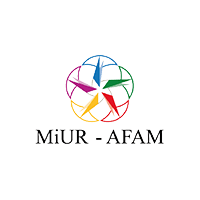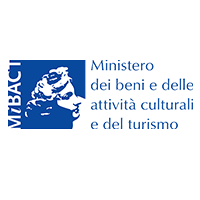Italiano
L’Accademia di Belle Arti di Catanzaro da 40 anni sul territorio calabrese, è diventata un punto di riferimento per lo sviluppo e la crescita socio-culturale dei giovani della Regione. L’Accademia ha attuato in passato scambi culturali con la Escola D’Arts i Oficis di Valencia,nel programma Socrates Lingua Accione con il patrocinio dell’European League Institutes of the Arts (ELIA) e si è contraddistinta in passato per esperienze territoriali come gli eventi di integrazione sociale “Pace e Amore” e “Zone Scoperte”, patrocinati dalla Provincia di Catanzaro e “Malattia e Arte” con il paternariato della Facoltà di Medicina dell’Università della Magna Graecia, di sostegno ambientale con il progetto “Ecovillaggi” con il patrocinio della Facoltà di Architettura e Urbanistica dell’Università degli Studi di Reggio Calabria, con cadenza annuale il progetto culturale “Metafore della Visione” in collaborazione con il Contemporary Films di Londra, e“Visual Bridge I” in collaborazione con l’Ambasciata del Giappone di Roma e Hashimoto Art Office di Tokyo.In linea con lo scenario artistico contemporaneo internazionale,l’Accademia modifica ed amplifica la proposta formativa dei trienni nei corsi di Decorazione, Grafica d’Arte, Illustrazione, Pittura, Scenografia e Scultura.
Questo Istituto intende Internazionalizzare il sistema Accademico, stipulando accordi bilaterali e multilaterali per promuovere e favorire la dimensione internazionale degli studi e della didattica con Istituzioni Europee e dell’Asia. L’area geografica di riferimento in Europa è il Portogallo, Spagna, Germania, Inghilterra, Francia, Polonia, e Turchia e non esclude la possibilità di indirizzare la mobilità verso istituzioni nelle aree dell’Asia, come Giappone, Cina, India e Corea. Questi scambi si concentreranno sul miglioramento delle reciproche opportunità di studio, formazione e ricerca. Legami con le Istituzioni e l’Accademia, saranno costruiti su interessi scientifici e altri fattori come le varie aree di ricerca e scopi educativi, modalità specifiche per lo scambio di docenti e studenti e di progetti di sviluppo nel campo digitale e multimediale.
Per garantire lo statuto e la mobilità di docenti e studenti, l’Accademia si atterrà alle norme e alle convenzioni del sistema universitario europeo in materia di curriculum, la concessione dei crediti, il diritto allo studio (formazione linguistica, informazione e consulenza) e di sostegno, con particolare attenzione alle facoltà coinvolte nel progetto Erasmus. Nel 2013, l’Accademia istituirà il Diploma Supplement per rispondere alle qualifiche avanzate dal sistema Universitario Europeo. Nello specifico con la mobilità, l’Accademia sta prendendo misure attive a rafforzare la propria posizione nella Regione Calabria, in Europa e a livello Internazionale.
La Pinacoteca dell’Accademia implementerà la propria collezione in modo sostanziale al fine di fornire un luogo per mostre di lavori di docenti, studenti, e artisti. L’importanza di questo spazio è evidente, sia come componente del programma e come un’entità con una propria identità e ambizioni curatoriale. Nel contesto dell’istruzione superiore nel campo delle arti figurativa e applicata in Italia, l’Accademia sfrutterà appieno il potenziale Internazionale e di scambio culturale, per la costituzione di nuove tecnologie per la pratica dell’arte e del design, per l’uso di queste innovazioni tra cui corsi online di altre istituzioni, a beneficio dell’ insegnamento e della ricerca.
Per quanto riguarda il progetto Erasmus, attività pedagogiche e culturali dell’Accademia saranno organizzate con cura per garantire il dialogo interculturale e massimizzare l’accesso senza sacrificare la qualità o il rigore. Archiviazione online, social networking, eventi culturali, d’arte e di teatro, laboratori e concerti saranno organizzati, basandosi sullo storico successo dell’Accademia in questo campo, con sponsor e partner Regionali, Nazionali e Internazionali.
Dalla sua fondazione, l’Accademia si è impegnata per l’uguaglianza sociale e la mobilità; impegno che va oltre la sua Regione d’origine e l’Italia (uguale opportunità di lavoro nella sfera sociale, coesione sociale, contro il razzismo e la xenofobia). E’ una priorità la preparazione di studenti provenienti da regioni poco sviluppate. Programmi e procedure dell’Accademia sono organizzati per garantire agli studenti in entrata e in uscita una adeguata preparazione dal punto di vista socio-culturale e delle lingue. Il riconoscimento dei crediti accademici (ECTS) avverrà in un tempo relativamente breve.
L’Accademia è impegnata per la trasparenza del suo curriculum e la piena integrazione dei docenti e studenti in entrata nella vita della comunità, e ampio riconoscimento è dato ai corsi di laurea dell’Accademia e alla statura della Facoltà, garantendo mobilità nelle discipline delle arti visive.I destinatari della mobilità Erasmus sono i professori e gli studenti dei vari corsi dell’Accademia.
English
Over the past 40 years, the Academy of Fine Arts of Catanzaro has become a important center for developing the socio-cultural growth of young people in the region.The Academy has implemented cultural exchanges with the Escola d’Arts i Oficis of Valencia, hosting students within the program, “Socrates Lingua Accione,” under the auspices of the European League Institutes of the Arts (ELIA).
The Academy has worked with organizations and sponsors in Italy and abroad on a variety of important cultural programs, such as “Peace and Love,” on the theme of social integration, sponsored by the Province of Calabria; “Wood sculpture contest Sila 2011,” a wood sculpture competition, in partnership with Fiera di Scultura in Legno, UNIKA, Val Gardenia; “Arte e Malattia,” in partnership with the Faculty of Medicine of Magna Graecia University in Catanzaro; annual cultural events such as “Metafore della Visione I-V,” carried out in collaboration with Contemporary Films London and Microcinema Perugia, and “Zone Scoperte I-II”, with the Province of Catanzaro; “Esercizi Etici,” a program on ethics sponsored by the Presidency of the Council of the Calabria Region, the Province of Catanzaro, and the Municipal Administration of Catanzaro; and “Visual Bridge I”, an international conference and workshop on the sculptures, carried out in collaboration with the Embassy of Japan in Rome and Hashimoto Art Office in Tokyo.
In line with contemporary developments in the fine and applied arts, the Academy has regularly modified and expanded its academic programs. These are currently offered on a three-year cycle in decoration, graphic art, illustration, painting, scenography, and sculpture; and on a two-year cycle in graphic design, multimedia and performative painting, landscape design, multimedia art direction, graphic illustration, graphic art, decoration for sacred art, and multimedia painting.
This Academic Institute intends to internationalize the system by entering into bilateral and multilateral agreements for faculty and student exchanges with leading European and Asian institutions.
Concerning new partnership research, the geographical area of interest in Europe is Portugal, Spain, Germany, England, France, Poland, Turkey, and not excluding the possibility of addressing mobility to institutions in the Asia continent as Japan, China, India, and Korea.
These exchanges will focus on enhancing reciprocal opportunities for study, training, and research. Ties with institutions among the faculty will build as well on their reputation, shared academic interests, and other factors as various areas of research and educational purposes, specific arrangements for the exchange of teaching staff and students and projects growth of a digital and multimedia area.
To ensure the standing and mobility of its faculty and students, the Academy will adhere to the standards and conventions of the European University system with regard to curriculum, granting of credit, student support (language training, information, and advice), and faculty employment and support, with specific emphasis on faculty involved in the Erasmus project. In 2013, the Academy will launch a supplemental diploma reflecting the enhanced qualifications required by the European University system. Specific to the issue of faculty mobility, the Academy is taking active steps to enhance its own and the Calabria region’s standing in Europe and internationally.
The Academy’s gallery will enlarge its own collection substantially and provide a venue for exhibitions of work by faculty, students, and others. The importance of such a gallery is obvious, both as a component of the program and as an entity with its own identity and curatorial ambitions. In the context of higher education in the fine and applied arts in Italy, the Academy will leverage fully the potential for international academic and cultural exchange, for the incorporation of technology and new media in the practice of art and design, and for the use of these innovations, including online courses from other institutions, to benefit teaching and research.With respect to the Erasmus project, the Academy’s pedagogical and cultural activities are organized carefully to ensure intercultural dialogue and maximize access without sacrificing quality or rigor. Online archiving, social networking, cultural events, art and theater workshops, and concerts are among the ways this will be achieved, building on the Academy’s history of success in this arena with regional, national and international sponsors and partners. From its founding, the Academy has been committed to social equality and mobility – a commitment that extends beyond its home region and Italy (equal opportunity in the workplace and in the social sphere, equality among sexes, maximum social cohesion, racism and xenophobia fighting). Preparation of students from less-developed regions is a priority.
The Academy’s programs and procedures are organized to ensure that these outgoing and incoming students are adequately prepared from a language standpoint and socio-culturally. It is a particular advantage that they can complete their studies and achieve recognition of their academic credits (ECTS) in a relatively short time. The Academy is committed to the transparency of its curriculum, the full integration of its faculty and students in the life of the community, and broad recognition of the value of the Academy’s degree programs and the stature of its faculty, ensuring their respective mobility in the disciplines and fields of visual art. The Academy will initially make the faculty and students to erasmus mobility.
› Firma del rappresentante legale dell’istituto
download: documento-firma





